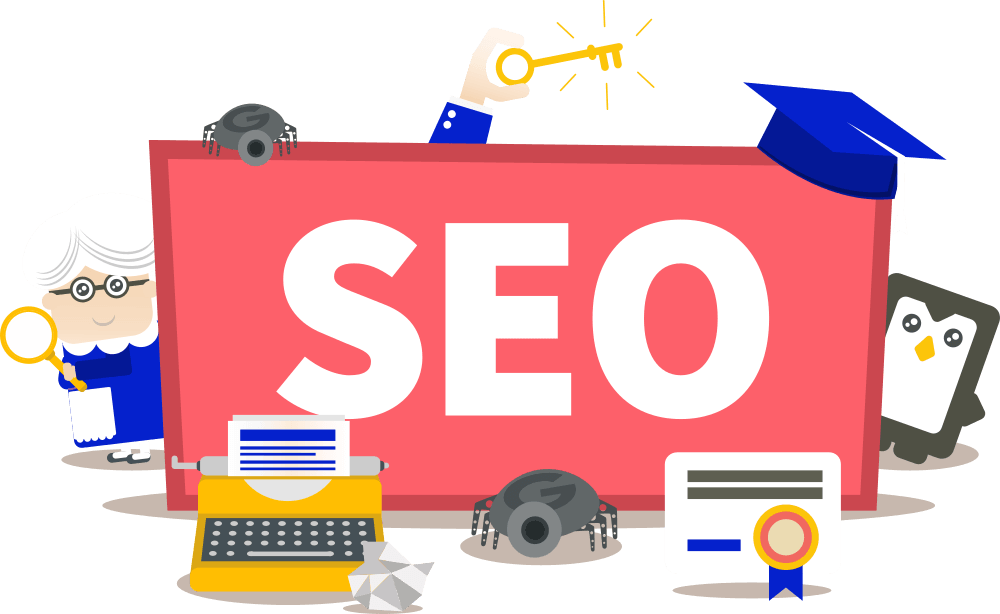User Experience Is the New SEO: How Design Psychology Drives Search Visibility
In today’s competitive digital marketplace, search engine optimization (SEO) is no longer just about keywords, backlinks, and technical tweaks—it’s about people. As Google’s algorithms evolve to reward user satisfaction and engagement, User Experience (UX) has emerged as one of the most influential ranking factors. Businesses collaborating with an experienced seo expert in lahore understand that modern SEO success depends not just on what users read, but how they feel when interacting with a website. This powerful blend of design psychology and SEO strategy is transforming how websites are built, ranked, and experienced.
1. From Algorithms to Audiences: The Evolution of SEO
Not long ago, SEO revolved around mechanical optimization: stuffing keywords, building backlinks, and manipulating metadata to climb search rankings. But as users became savvier and search engines smarter, this approach started to fade.
Google’s updates—such as RankBrain, BERT, and Helpful Content—have shifted focus toward understanding user intent and satisfaction. Algorithms now measure how visitors interact with websites: how long they stay, what they click, and whether they find what they’re looking for.
This shift means UX and SEO are no longer separate disciplines. Instead, they work hand-in-hand to deliver experiences that not only rank well but also delight users. Websites that prioritize clarity, usability, and emotional connection naturally outperform those that focus solely on technical optimization.
In 2025 and beyond, design psychology—the science of how visuals, layout, and interaction influence behavior—is becoming the cornerstone of effective SEO.
2. Why UX Is Now a Core Ranking Factor
Google’s mission has always been to “organize the world’s information and make it universally accessible and useful.” To achieve that, it must surface content that users find relevant, credible, and satisfying.
This is where UX enters the equation. Metrics like bounce rate, dwell time, and click-through rate (CTR) are signals of user satisfaction. If users leave your site quickly or struggle to find what they need, search engines interpret that as poor quality.
Conversely, if visitors stay longer, explore multiple pages, and complete actions (like filling out a form or making a purchase), it tells Google your site delivers real value.
UX factors that directly influence SEO include:
-
Page speed – Faster sites improve engagement and retention.
-
Mobile responsiveness – Essential since most searches are mobile-first.
-
Readability and layout – Clear hierarchies help both users and crawlers.
-
Navigation – Intuitive menus reduce friction and improve crawlability.
-
Accessibility – Inclusive design ensures broader reach and better usability.
The connection is clear: better UX leads to better engagement, which signals higher quality—and ultimately, higher rankings.
3. The Psychology of Design: Understanding User Behavior
Design psychology focuses on how visual and interactive elements influence human perception and decision-making. When applied to SEO-driven design, it ensures that every color, font, and layout element guides users toward a goal—while also signaling relevance to search engines.
Here’s how design psychology principles can enhance both UX and SEO:
a. Visual Hierarchy and Eye Flow
Humans process visuals faster than text. Strategic use of size, contrast, and placement directs attention to key elements—like headlines, CTAs (calls-to-action), and navigation. A well-structured visual hierarchy not only improves engagement but also helps search engines understand content importance through semantic tagging (H1, H2, etc.).
b. Color and Emotion
Colors trigger subconscious emotions. For example, blue conveys trust, red evokes urgency, and green suggests growth or positivity. Choosing a consistent color palette that reflects your brand psychology builds trust and encourages interactions, which can boost conversion rates and reduce bounce.
c. Cognitive Load and Simplicity
Every unnecessary element increases cognitive load—the mental effort required to process information. Clean, minimalist designs make it easier for users to focus on content and navigate intuitively. Search engines reward simplicity, too, as streamlined structures improve crawlability and speed.
d. Trust and Familiarity
Users rely on visual cues to decide whether a site feels trustworthy. Consistent branding, secure HTTPS connections, visible contact details, and professional imagery all create subconscious signals of reliability. Sites that feel credible naturally retain users longer—improving SEO metrics.
4. Core Web Vitals: Measuring UX Performance
Google formalized the connection between UX and SEO through Core Web Vitals, a set of measurable metrics that quantify user experience quality. These include:
-
Largest Contentful Paint (LCP): Measures how fast the main content loads (ideal: under 2.5 seconds).
-
First Input Delay (FID): Gauges interactivity—how quickly a page responds to a user’s action (ideal: under 100 ms).
-
Cumulative Layout Shift (CLS): Evaluates visual stability—ensuring elements don’t shift unexpectedly during loading (ideal: under 0.1).
Meeting these standards isn’t just about technical optimization—it’s about empathy for the user. Fast, stable, and responsive websites provide a seamless experience that satisfies both humans and algorithms.
Developers and SEO specialists now collaborate to ensure code cleanliness, efficient caching, image optimization, and lightweight frameworks—all of which improve Core Web Vitals and elevate rankings.
5. The Role of Mobile-First Design in User-Centric SEO
In 2025, mobile devices dominate search traffic, and Google’s mobile-first indexing means your mobile version is the primary version considered for ranking.
Mobile UX principles like finger-friendly buttons, concise copy, and vertical content flow are critical. A cluttered or non-responsive mobile site sends users away—and search engines notice.
Effective mobile-first SEO design focuses on:
-
Prioritizing speed: Lightweight assets and compressed images.
-
Optimizing content hierarchy: Short paragraphs and digestible sections.
-
Touch-based navigation: Simplified menus and large tap areas.
-
Reducing friction: One-click checkout or minimal-form sign-ups.
When users can browse, shop, or engage effortlessly on any device, both UX and SEO performance skyrocket.
6. Storytelling Through Design: Engaging the Human Mind
Humans are wired for stories, and websites that tell compelling visual narratives stand out. Story-driven design combines imagery, typography, and flow to create emotional engagement — something algorithms increasingly reward through behavioral metrics.
For example:
-
A landing page that visually guides a user from problem to solution mirrors their thought process, improving conversion likelihood.
-
Scroll-based animations and interactive infographics make information memorable, increasing dwell time.
-
Micro-interactions (like hover effects or loading animations) add delight without overwhelming the experience.
Every design decision, from the hero image to button color, contributes to storytelling — and storytelling keeps users hooked. In SEO terms, more engagement equals stronger signals of relevance.
7. Accessibility: Designing for All, Ranking for More
An accessible website isn’t just a moral obligation—it’s an SEO advantage. Features like alt text for images, proper heading structure, contrast ratios, and keyboard navigation make sites usable for everyone, including users with disabilities.
Google favors accessible websites because they inherently offer better UX. Accessibility also improves technical SEO: screen-reader-friendly markup, structured content, and descriptive metadata help crawlers interpret pages accurately.
By designing inclusively, businesses expand their reach, improve engagement, and enhance search visibility simultaneously.
8. Emotional Design and Trust: The SEO Connection
Trust is one of the strongest emotional triggers influencing user behavior. A website that feels trustworthy encourages longer visits, return traffic, and conversions—all of which feed SEO success.
Elements that build emotional trust include:
-
Consistency: Cohesive fonts, colors, and spacing create a stable visual rhythm.
-
Transparency: Clear pricing, visible policies, and authentic testimonials reduce hesitation.
-
Security: HTTPS encryption and secure payment icons reassure users.
-
Human Touch: Personalized images, friendly tone, and relatable language foster connection.
When users feel emotionally comfortable, they engage more deeply. This engagement tells search engines that the content satisfies intent—a crucial factor for sustained ranking.
9. Behavioral SEO: The Metrics That Matter Most
As SEO becomes increasingly user-centric, behavioral metrics have taken center stage. Design psychology plays a vital role in shaping these key indicators:
-
Click-Through Rate (CTR): Compelling design and meta snippets attract clicks from search results.
-
Bounce Rate: Clean navigation and relevant visuals reduce quick exits.
-
Dwell Time: Engaging layouts and storytelling increase time spent on site.
-
Conversion Rate: Emotionally aligned CTAs and trust-driven design improve goal completions.
Search algorithms interpret these behaviors as proof of quality. Thus, improving UX design doesn’t just help users—it actively improves ranking potential.
10. The Future: AI, Personalization, and Predictive UX
Looking ahead, AI-driven personalization will take UX and SEO synergy to the next level. Search engines and websites alike are learning to predict what users want before they even ask.
Imagine:
-
Websites that adapt layouts and content based on a visitor’s preferences or behavior.
-
Voice and visual search interfaces designed to respond with hyper-relevant, context-aware results.
-
Predictive UX that anticipates user intent—showing the right product, guide, or offer at the perfect moment.
In this future, SEO will be about crafting experiences, not just optimizing content. The brands that thrive will be those that merge data-driven insights with human-centered design thinking.
Conclusion: Designing for Humans, Ranking for Success
In the age of intelligent algorithms, SEO and UX have become inseparable. The websites that dominate search rankings are those that understand their visitors—not just as users, but as humans with emotions, needs, and goals.
By leveraging design psychology, businesses can create experiences that are not only visually appealing but psychologically satisfying. Every interaction—from page load to click—communicates value to both people and search engines.
The future of SEO isn’t about chasing algorithms; it’s about earning trust, delighting visitors, and crafting digital experiences that feel human. When design, psychology, and optimization unite, search visibility follows naturally.



